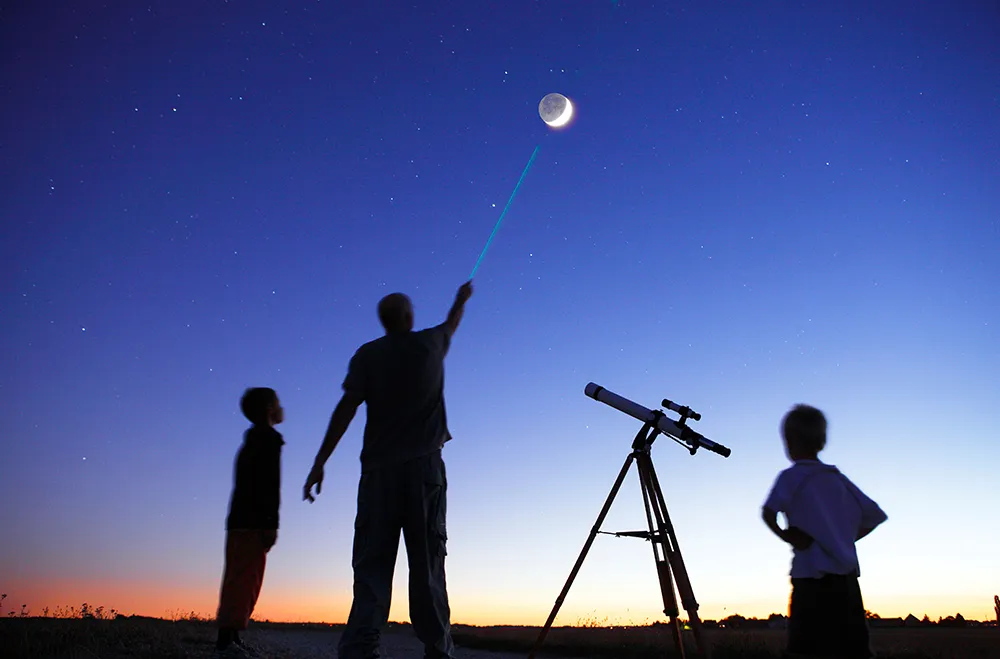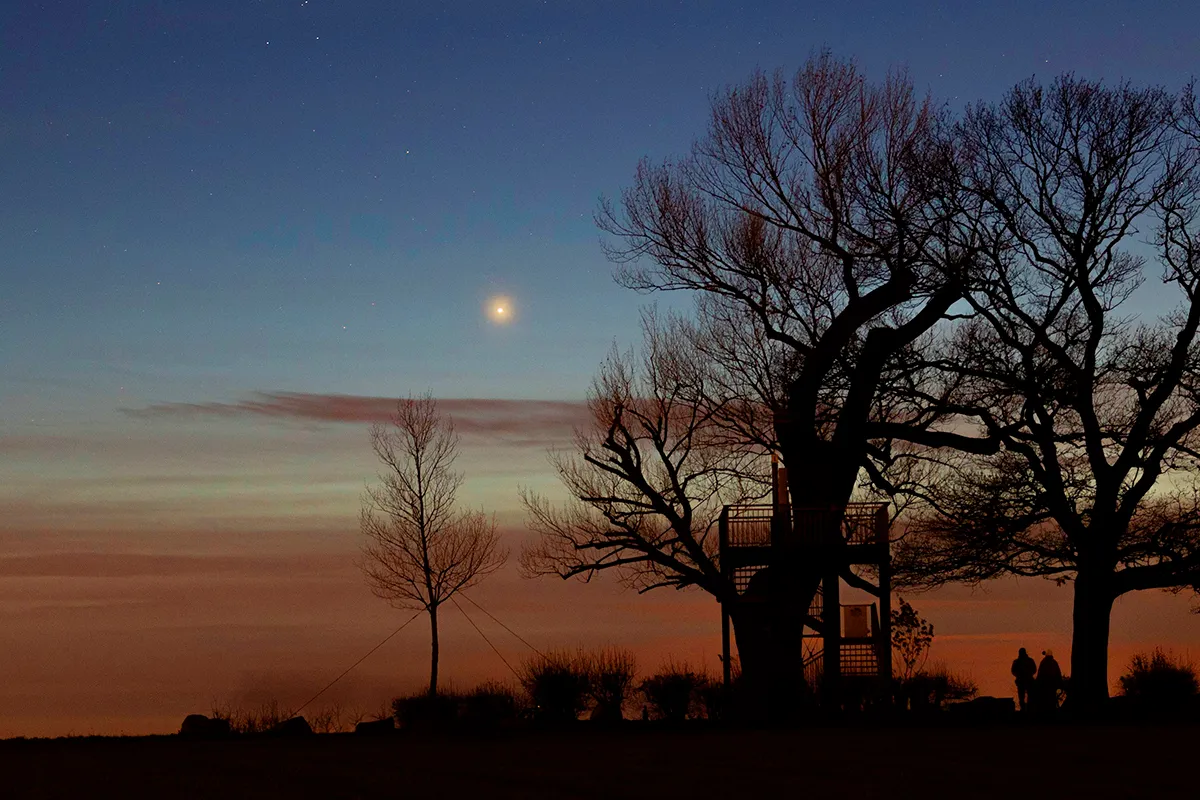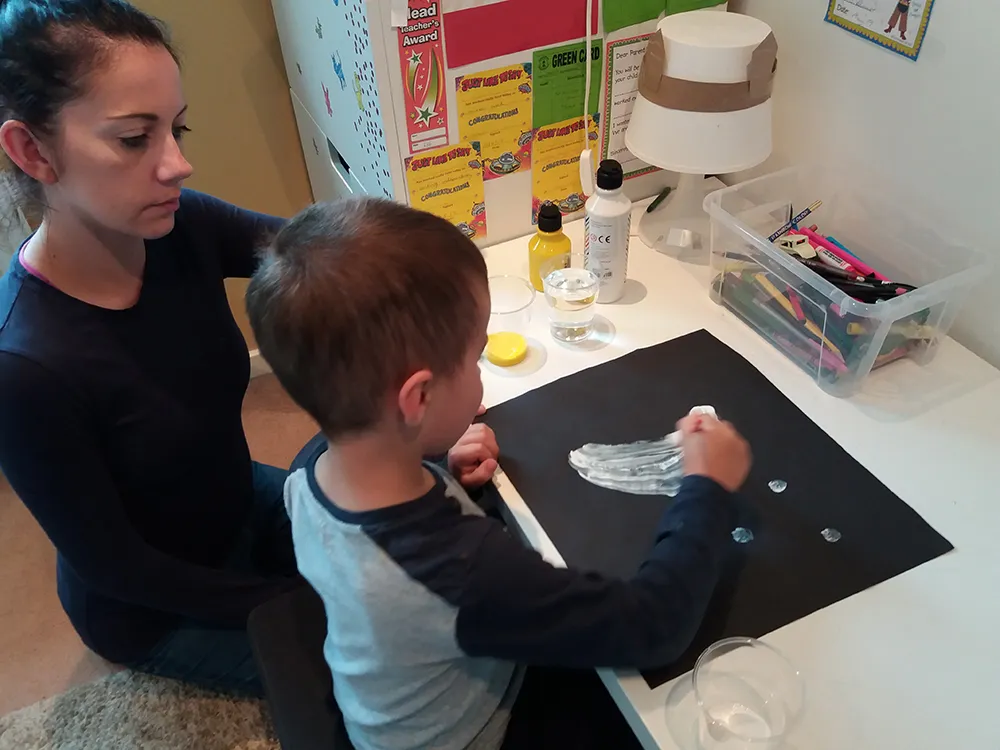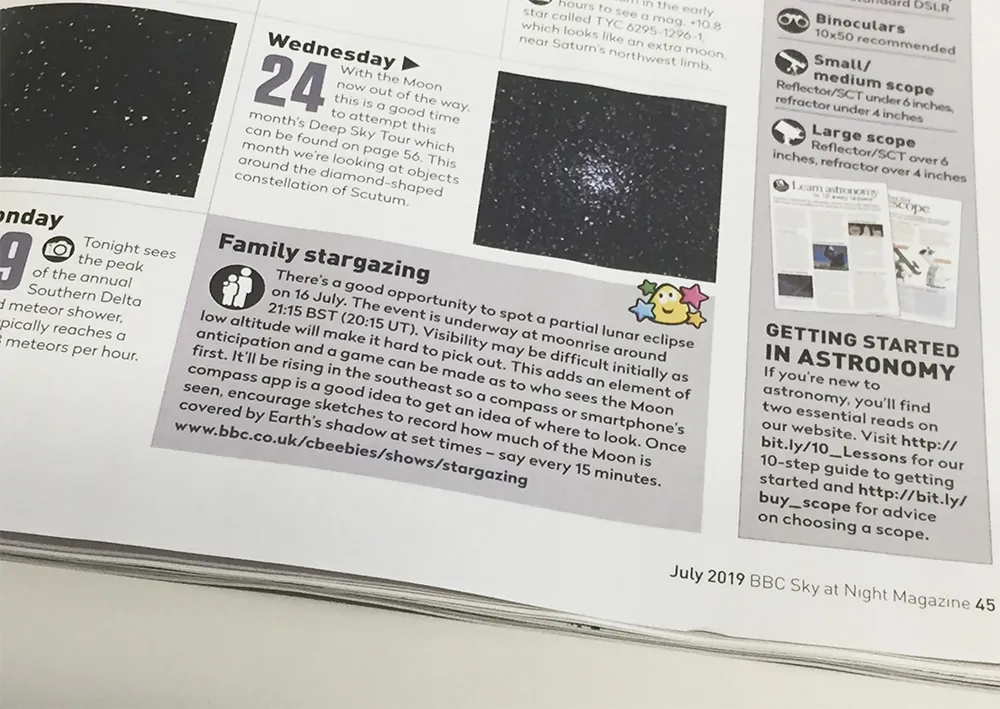Whether it's learning the constellations or the planets of the Solar System, there are many ways to do stargazing with kids.
If you want to get children interested in stargazing, as is often the case, let them lead the way, telling you what they're interested in.
Listen to their questions about space and the night sky and answer as best you can.

Try a mix of astronomical activities and don’t worry if things don’t go the way you planned.
Never be afraid to answer with “I don’t know, but that’s a brilliant question. Let’s look it up together.”
If they’re struggling, prompt their interest by asking them about what they can see, or what they already know.Build on their curiosity, but don’t overwhelm them with too much information.
Everyone learns better through play, so have fun! Here are our top tips for getting kids into astronomy.
Stargazing with kids - 8 top tips
1
Choose the right equipment

When stargazing with kids, having the right accessories makes a big difference.
Help kids get used to handling a rotating star map as soon as they are able to.
A red light head torch can reassure children if they are nervous of the dark.
And take a laser pointer to help them point at the sky but make sure they know it’s dangerous to point it at anyone.
Astronomy apps are useful and are an appealing tool for some children.
Binoculars are the best choice for most beginner stargazers, and kids will get more general use out of them.
Look for lightweight models and check the smallest eye width setting fits them.Get them into the habit of always using the neck strap.
A refractor telescope is a good option. They are low maintenance and is easy to use.
Try borrowing or renting a telescope before you buy.
Is there a local astronomy group that would welcome you all?
Read our pick of the best telescopes for kids
2
Teach them what they’re looking at

If you can’t get outside you can use a tennis ball and a torch to demonstrate the phases of the Moon or an eclipse.
Hold the torch and explain you represent the Sun.
Ask them to hold the tennis ball above their heads and look at the shape of the shadow on the ball as they turn slowly on the spot.
Another activity, which shows scale, involves a basketball and a tennis ball.Ask what the tennis ball represents if the basketball is Earth.
Next, give them the tennis ball Moon and see how far away they think they need to stand from the basketball (on this scale it’s about 7.5m).
By shining a light on a tennis ball you can also show how an eclipse works, as the Moon casts its shadow on Earth.
3
Look at bright targets

“What is the brightest thing you can see in the sky tonight?”
It is easiest to start by looking for bright targets, so teach them how to observe the Moon or how to find the planets.
Do they notice the red glow from Mars? Have they seen the Moon during the day?
Try asking them how you might measure the change in the apparent shape of the Moon over time.They could take a picture or draw the Moon with glow in-the-dark paint once a week.
A verse of Twinkle Twinkle Little Star leads nicely into a discussion about why stars twinkle, but planets don’t twinkle as much.
The stars, being much further away and pinpoints of light, appear to flicker because of the way their light is affected by our atmosphere.
The planets, which are much closer and reflect the light from the Sun, aren’t affected as much.

4
Think about the practicalities
The first consideration should be to get comfortable. Try bringing a mat to lie on or camping chairs, then allow time to adjust to the dark.
What can they see; are there any patterns? Encourage your young stargazer to practise looking with one eye.
Ask if they would like you to help cover one eye with a hand, or bring a toy eye patch just in case.
They could use a ‘dark sky tube’ by rolling up a piece of black card into a cylinder big enough to fit over their eye.It'll also help to combat inner city light pollution.
Have a step stool for them if you are observing with a telescope.
Let them move the scope to find something bright in the sky, then show them how the picture they see changes with just a little nudge of a hand.
Explain that it’s best not to touch the equipment once it’s pointing at a particular object.If you hold a child’s hand while they’re at the eyepiece it will help stop them grabbing at the eyepiece as well as giving them stability.
Have patience and take time to enjoy this special experience.
For more advice, read our guide on helping your family and kids use a telescope

5
Consider the time of year
When stargazing with kids, remember to bring layers when you are venturing outside, as it can be cold at night even in summer.
Bug spray, snacks and drinks are all recommended.
Keep an eye on the weather and have a back-up plan should clouds appear or rain sets in.
Check when Mercury, Venus, Mars, Jupiter, and Saturn will be visible and avoid trying to observe the fainter planets during the brightness of a full Moon.
6
Find a good place to observe
Start your observations in a familiar place such as a back garden or local park.
Once they’re comfortable with that, start venturing further afield.
Streetlights affect night vision so get as far away from them as possible.
Seek out a dark-sky site for the best night skies protected from light pollution.
But if you can’t get out that far remember it’s still possible to see the Moon, some planets, and the brightest stars from a city if it’s a clear night.
7
Show them how to safely observe the Sun

Children are taught from a young age not to look directly at the Sun, but remind them of this, particularly if you are using magnification.
Special eye protection is available but the safest way for them to observe is using projection.
Take a long fully enclosed cardboard box and make a hole big enough to stick their head through on one of the longest panels.
Place a sheet of white paper over the end they will face. Find out how to make a solar projection screen.
On the opposite panel, behind where their head will be, make a high pinhole.
They will need to stand so they are facing away from the Sun, but the pinhole is pointing at it.
The light should travel over their head onto the paper.
A solar filter can be used with binoculars or a scope to project onto a white sheet, but never leave that setup unattended in case anyone tries to look through the eyepiece.
8
Read the monthly Sky Guide in BBC Sky at Night Magazine
Each month in the magazine's Sky Guide section we present a range of highlights to look out for in the night sky over the coming weeks.
Our Sky Guide includes a target specifically selected for families and young stargazers, perfect for stargazing with kids.
Find out how to subscribe to our print or digital edition here.
